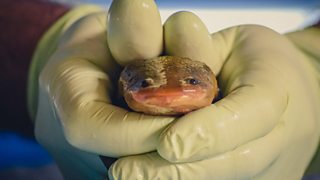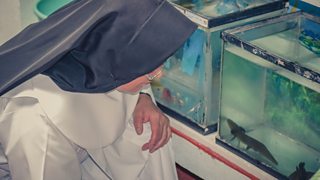
A Tale of Two Axolotls
A convent of Mexican nuns is helping to save one of the world’s most remarkable amphibians: the axolotl.
A convent of Mexican nuns is helping to save one of the world’s most remarkable amphibians: the axolotl. Axolotls are able to regrow lost limbs and other body parts. As a result, these aquatic salamanders are of great interest to researchers worldwide who study them in the hope of imitating the trick: to grow tissues and organs in medicine. The nuns also began to breed and rear their axolotls for medical reasons. They use the salamander as the key ingredient in a traditional Mexican remedy for coughs and other respiratory illnesses. The Convent of the Sisters of Immaculate Health sell the medicinal syrup to the public. As well as being the basis for a popular folk remedy, the axolotl is also the manifestation of one of the ancient Aztecs’ most important gods. It is an animal of deep-rooted cultural significance for Mexicans.
The big problem is that the nun’s species of axolotl only lives in nearby Lake Patzcuaro and it has been pushed to the edge of extinction because of pollution and introduced fish species. This is why the sisters began to breed the animals in the convent about 15 years ago. Mexican biologists have discovered that the nuns are expert breeders of species and have started to collaborate with them in a conservation programme to make the Lake Patzcuaro an axolotl-friendly habitat once more and to introduce captive-bred animals to restore the lake’s population.
Â鶹ÊÓƵAV science correspondent Victoria Gill travels to central Mexico to meet the nuns in their salamander farm, and takes a boat trip on the lake with the scientists working with them.
Victoria also punts along the polluted waterways of Xochimilco in the south of Mexico City. They are remnants of a great lake that used to stand where the mega-city of 20 million human inhabitants now sprawls. A few canals here are also the last refuge of another species known as the Mexican axolotl. This species is even closer to extinction in the wild – there may be as few as 500 left. Paradoxically, there are many thousands of them in captivity as pets and laboratory animals all over the world. Most are the descendants of about 50 individuals caught and taken to Europe in the middle of the 19th Century.
Victoria joins a team of Mexico City biologists who are radio-tracking a few of their vanishingly rare wild relatives, gathering data which may help to keep the species from disappearing completely.




